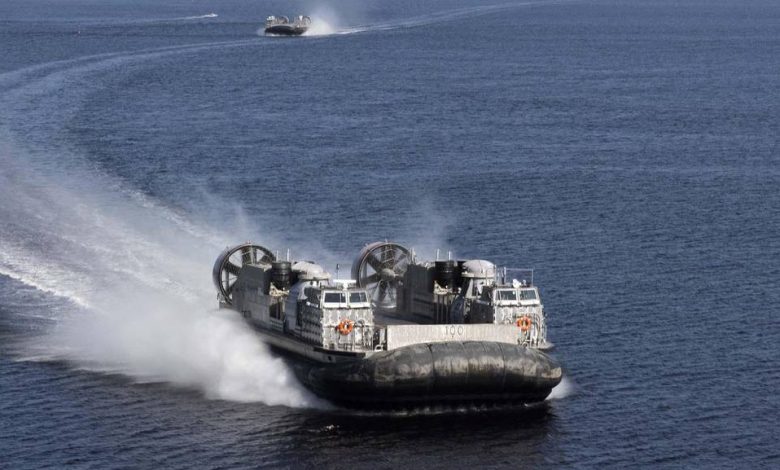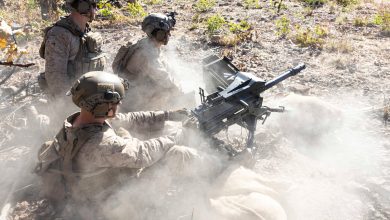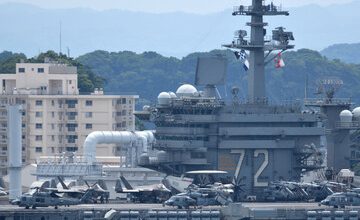Navy slows procurement of key vessel for Marine littoral maneuvers

The Navy has delivered nine vessels so far to replace its aging fleet of landing craft, but those watercraft’s operational status was delayed by a year due to testing delays.
The ship-to-shore amphibious connector, set to replace the existing landing craft, air cushion platform, is now expected to hit initial operational capability in September and the Navy will decide on full production by January 2028, according to the Government Accountability Office’s Weapon Systems Annual Assessment, released Monday.
Once fielded, the ship-to-shore connector vessel will take on the name of the landing craft, air cushion vessel, a Vietnam War-era platform, according to the report.
The amphibious craft, which rides on a cushion of air, allows sailors and Marines to off and onload troops, vehicles, equipment and supplies rapidly from the well decks of amphibious ships.
There are 72 craft in the Navy’s fleet and the current plan calls for a one-to-one replacement with the new ships as the legacy connectors reach the end of their service life.
In 2000, the Navy started a service live extension program to add 10 years of use to the existing fleet.
Since the replacement program launched in 2009, costs and timelines have both expanded.
The first reported cost estimate in 2012, following early development phases, was $5.3 billion total, for a unit cost of $73 million per vessel.
As of 2023, according to the report, the program is expected to cost $6.5 billion total, for a unit cost of $90 million per vessel.
The Navy has slowed its procurement to two craft each year during fiscal years 2025 to 2028. That decision was in part due to low procurement funds expected during that time frame.
A 2023 RAND Corporation report called on the Navy and Marine Corps to address the survivability of their amphibious craft, which includes the connectors and other vessels.
“The landing craft utility (LCU) and landing craft air cushion (LCAC) … were not designed with survivability in mind as part of a [Stand-In Force]. The requirements for these craft were developed using past naval concepts for power projection and in a more permissive threat environment,” the RAND report reads.
Existing and replacement ship-to-shore connector data:
Landing craft, air cushion
- Payload: 60 tons.
- Personnel: 23; 185 when configured with the personnel transport module.
- Speed: 40 knots, depending on load.
Ship to shore connector amphibious craft
- Payload: 74 tons.
- Personnel: 26; 85 when configured with the personnel transport module.
- Speed: 35 knots at sea state 3, or faster, depending on load.
Source: Marine Corps Combat Development and Integration
The connector program has delivered nine vessels to the Navy so far, four of those over a 12-month period in 2023. The program has 24 of the eventual 72 craft currently under contract with Textron Systems Inc.
When the service reached six vessels in its inventory, it should also have been at initial operational capability. However, according to the report, the program had yet to complete initial operational testing and evaluation.
That target date has slipped each year since its initial evaluation in 2020. The program expects to conclude operational testing in June, according to the GAO report.
Although the manufacturer was able to deliver four craft in a year, it has taken, on average, five years from start to finish to build a single vessel, according to the report.
The GAO report noted that the connector program is installing solutions to two technical problems previous connectors had exhibited: cracking propeller blades and premature gearbox wear.
Program officials have not found problems with these issues since installing solutions on new connectors.
But LCAC 108 did have one “severe deficiency,” according to the report. Weld repairs to the bottom of the craft’s hull failed during testing, “allowing water to enter the hull.”
Those defects were corrected, and the vessel was delivered to the Navy in November 2023.
Todd South has written about crime, courts, government and the military for multiple publications since 2004 and was named a 2014 Pulitzer finalist for a co-written project on witness intimidation. Todd is a Marine veteran of the Iraq War.







